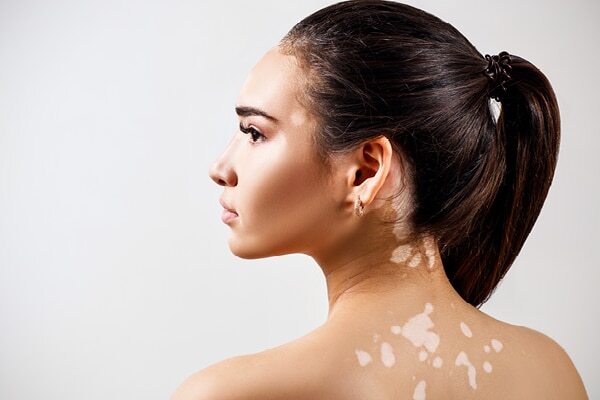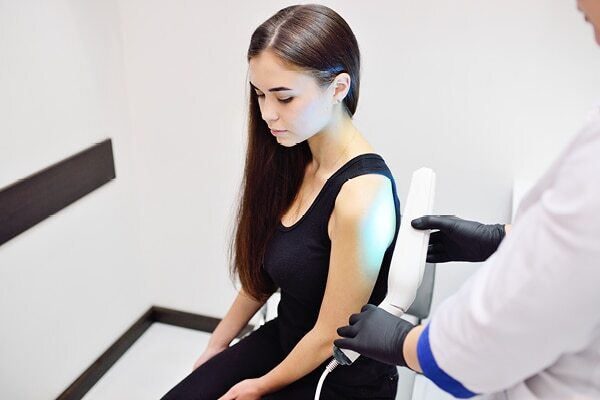Skin is the largest organ of the human body. Throughout a person's lifetime, the skin undergoes various changes, some are affected by external conditions like UV rays, pollution, smoke, etc., and results in natural changes like ageing and skin discolouration. Others are a result of internal conditions and are often difficult to treat or not treatable at all. One such skin condition is called vitiligo. In simple terms, it is a disease that causes the loss of colour from the skin in patches. It is a common condition and there are 1 million cases reported in India per year. The awareness about this skin condition is now widespread, and there are a lot of vitiligo treatment options available too which did not exist for a long time. If you or a loved one has this condition and wants to know about the various vitiligo treatment options we are here to explain it in detail. To understand this skin condition better we consulted Amritsar-based dermatologist Dr. Ameesha Mahajan of RM Aesthetics. Read on as she elaborates on the skin condition and talks about ways to treat it with the help of various procedures.
01What is vitiligo?

Vitiligo is an autoimmune skin condition in which the body's immune cells attack and destroy the pigment-producing cells, resulting in white patches on the skin. It can affect any person of any age, gender or ethnicity. Some people can have only a few patches while others may have more extensive involvement of the skin and even hair sometimes. The skin condition is photosensitive this means the affected areas or white patches will be more sensitive to sunlight than the rest of the skin. There is no way to identify or know whether the patches will spread or remain stable. It may spread within weeks or stay as-is for months and years. It is more visible among those with wheatish to dark skin tone.
02Facts on vitiligo

03What is the best treatment for vitiligo?






The first-line treatment of vitiligo is with medicines which help stop the spread of the disease. To bring back the colour, apart from medicines, a number of treatment options are also used like narrow-band UVB therapy, excimer laser, micro pigmentation and skin grafting. Let's take a look at each of these treatment options in detail. While it is not a treatment as such, using sunscreen is highly recommended. As mentioned before, the lighter patches of skin are sensitive to the rays of the sun and may burn easily. This can lead to more skin problems, therefore it is mandatory to wear sunscreen before stepping out in the sun. Visit a dermatologist to get one that best suits your skin type. Anti-inflammatories are usually recommended to those with this skin condition. Creams like corticosteroids and calcineurin inhibitors can be used for vitiligo treatment, however, these can only be bought through prescription. These ointments target inflammation and reduce the spread of pigmentation, in some cases this will help your skin return to its natural colour. However, the treatment is slow and can take several months to show results. There are also a few side effects of these creams such as increased skin cancer risk, discoloration and skin thinning. It can be used as a chamber at a dermatologist's clinic or a hand held home use device, depending on the extent of the disease. A number of sessions are required but are usually very effective. You may have to visit the clinic 2-3 times per week for this form of vitiligo treatment. If the spots have spread across large areas, UVB phototherapy might be used and the treatment will be done in a hospital. It uses a specific wavelength of UVB light and is a relatively safer option. The number of sittings required for bringing back the pigmentation are also less as compared to UVB therapy. It is a very compact device meant for smaller areas and cannot be used for large areas. The white patches which are resistant to treatment can be made to match the skin colour with the help of special colours which are tattooed in the skin with the micro-pigmentation device. The colour match is not exact, but it takes the white colour away. This method of vitiligo treatment is effective, however it will have to be repeated every few years to make it look as natural as possible. In some cases tattooing can trigger more pigment loss, therefore it is important to discuss all your options along with risks before finalising one. If a white patch is not responding to treatment, then skin grafting is a great option in which a thin layer of the skin is taken from another area (which is not affected by vitiligo) like the thigh or inner area of the arm and attached to the white patches surgically. Since the pigment-producing cells are manually transferred, the results are very good. This surgery can bring back the pigmented cells to the white area, but it cannot stop the spread of the disease so it is very important that you consider undergoing the surgery only if your vitiligo is stable for at least a year and is not spreading.
04Supplements and lifestyle changes

There is no scientific evidence to prove that a particular diet can either improve or prevent vitiligo. A diet rich in antioxidants helps in reducing oxidative stress in the body and can act as an adjuvant to the treatment. Here's a list of foods that people with vitiligo have found helpful for their condition.
- Green leafy vegetables
- Bananas
- Chickpeas or garbanzo beans
- Figs and dates
- Roots vegetables like carrots, beetroots and radishes Apart from these, there's also a list of foods that people with vitiligo should avoid, especially those with depigmenting agents like hydroquinones. Some problem foods include the following.
- Alcohol
- Coffee
- Curd
- Fish
- Pickles
- Citrus
05FAQs about vitiligo

Q. Can vitiligo be cured?
**A. **The first and the most common question every dermatologist gets is whether vitiligo is curable? Sadly, the answer is no, there is no cure for vitiligo. Having said that, over the years, doctors, with the help of technology have come up with various options that can make it look less visible or even correct the problem if it only covers a small area.
Q. Is the sun good for vitiligo?
**A. **Some people may think the sun might even out the complexion and make vitiligo appear less obvious. You should know that the sun is not good for vitiligo, the white patches are extra sensitive and may get burned due to the harsh rays of the sun. It is mandatory to apply sunscreen before stepping out.
Q. What triggers vitiligo?
**A. **A pigment called melanin is responsible for giving your skin its natural colour, it is produced by skin cells melanocytes. Those with vitiligo don't have enough melanocytes to produce melanin in your skin. This leads to the appearance of white patches on your skin, hair and at times inside the mouth. There are no external triggers that cause vitiligo, it can happen to anyone and at any age.








